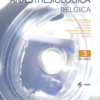Herpes simplex virus reactivation among severe COVID-19 patients: to treat or not to treat?
COVID-19, SARS-Cov-2, herpes simplex virus, HSV-1, acyclovir, intensive care
Published online: Sep 20 2023
Abstract
Background: Herpes simplex virus type 1 (HSV-1) reactivation in the airways is a common finding among patients admitted to the intensive care unit and has been more recently been reported in critically ill COVID-19 patients. Evidence suggests that HSV-1 reactivation in critically ill patients may be associated with higher morbidity and mortality rates. However, there is conflicting data about whether treatment with acyclovir impacts outcomes.
Objectives: The primary aim of this study is to assess whether acyclovir improves survival in critically ill COVID-19 patients with concomitant HSV-1 reactivation. Additionally, we explore the effect of acyclovir on cardiorespiratory instability, biochemical markers of inflammation and renal function. Incidence, potential risk factors and outcomes of HSV-1 reactivation in COVID-19 ICU patients are studied last.
Methods: A retrospective single-center cohort study set in a Belgian tertiary-care university hospital. All COVID-19 patients admitted to the ICU between March 1st, 2020, and April 15th, 2021, and were tested for HSV-1 using real-time PCR in airway samples were included for analysis. The administration of acyclovir for patients with HSV-1 reactivation was not randomized. Mortality and various markers of morbidity (cardiorespiratory instability, biochemical markers of inflammation, and renal function) were compared between patients that had received acyclovir and those that had not. Secondary outcome measures were respiratory and inflammatory markers of disease severity.
Results: 34.7% (42/121) of patients had HSV-1 reactivation, of which 67% (28/42) received acyclovir. ICU mortality was 36% (n = 10) in the acyclovir group versus 0% in the untreated group. Multivariate analysis resulted in OR 3.82 (95% CI 1.37 – 10.68) for ICU mortality in the treated group. Patients treated with acyclovir had a longer length of stay (41.8 vs. 26.8 days, p = .018), longer duration of invasive mechanical ventilation (33.4 vs. 21.8 days, p = .050), and lower PaO2/FiO2 ratio (59.9 vs. 73.4 mmHg, p = .008).
Conclusions: The role of acyclovir in patients with HSV-1 reactivation in the ICU remains controversial. According to this study, respiratory HSV-1 reactivation for this specific patient group might be better left untreated. Treatment selection bias, however, could not be fully excluded.
